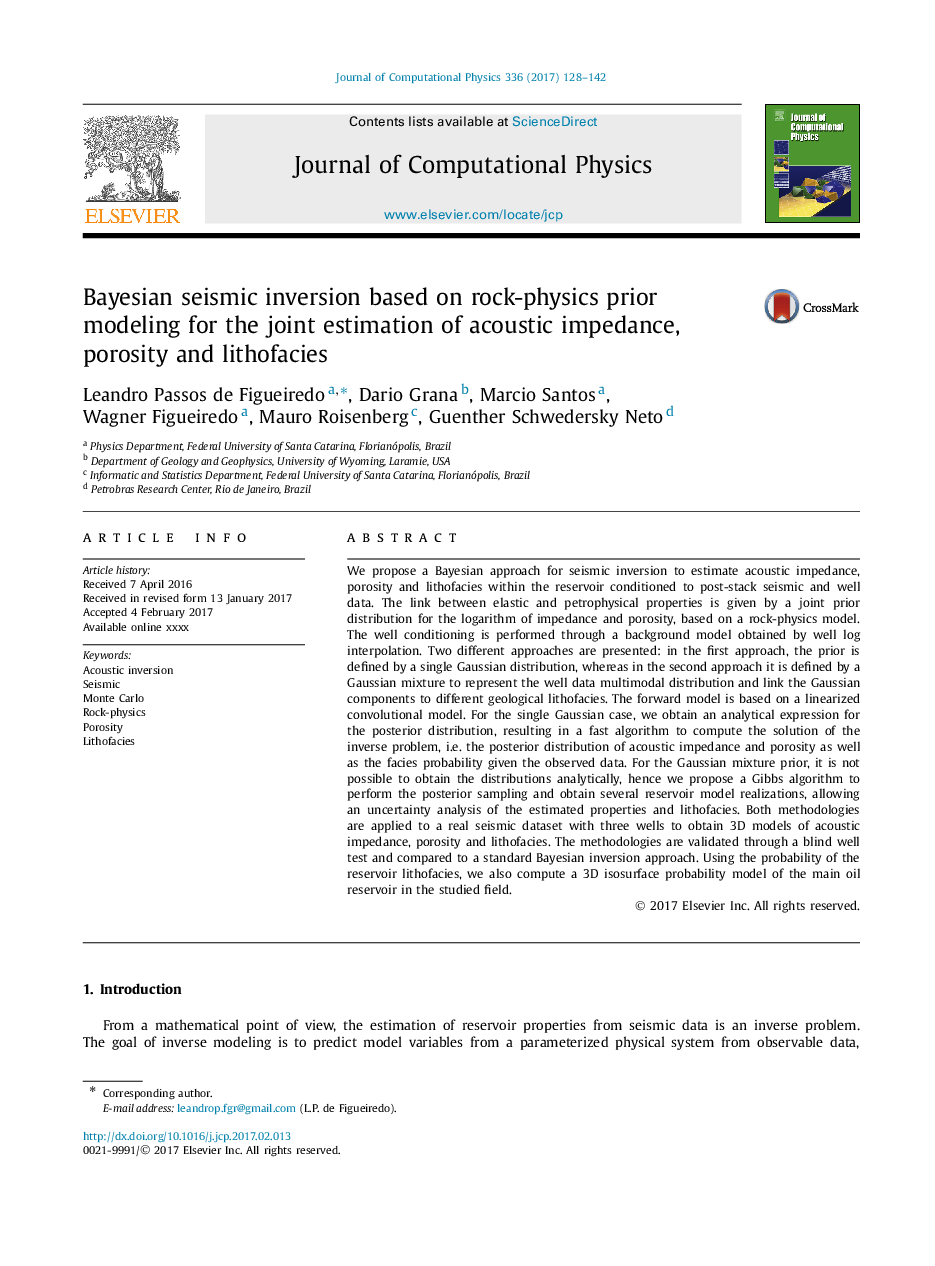| Article ID | Journal | Published Year | Pages | File Type |
|---|---|---|---|---|
| 4967811 | Journal of Computational Physics | 2017 | 15 Pages |
Abstract
We propose a Bayesian approach for seismic inversion to estimate acoustic impedance, porosity and lithofacies within the reservoir conditioned to post-stack seismic and well data. The link between elastic and petrophysical properties is given by a joint prior distribution for the logarithm of impedance and porosity, based on a rock-physics model. The well conditioning is performed through a background model obtained by well log interpolation. Two different approaches are presented: in the first approach, the prior is defined by a single Gaussian distribution, whereas in the second approach it is defined by a Gaussian mixture to represent the well data multimodal distribution and link the Gaussian components to different geological lithofacies. The forward model is based on a linearized convolutional model. For the single Gaussian case, we obtain an analytical expression for the posterior distribution, resulting in a fast algorithm to compute the solution of the inverse problem, i.e. the posterior distribution of acoustic impedance and porosity as well as the facies probability given the observed data. For the Gaussian mixture prior, it is not possible to obtain the distributions analytically, hence we propose a Gibbs algorithm to perform the posterior sampling and obtain several reservoir model realizations, allowing an uncertainty analysis of the estimated properties and lithofacies. Both methodologies are applied to a real seismic dataset with three wells to obtain 3D models of acoustic impedance, porosity and lithofacies. The methodologies are validated through a blind well test and compared to a standard Bayesian inversion approach. Using the probability of the reservoir lithofacies, we also compute a 3D isosurface probability model of the main oil reservoir in the studied field.
Related Topics
Physical Sciences and Engineering
Computer Science
Computer Science Applications
Authors
Leandro Passos de Figueiredo, Dario Grana, Marcio Santos, Wagner Figueiredo, Mauro Roisenberg, Guenther Schwedersky Neto,
